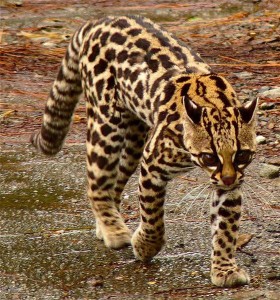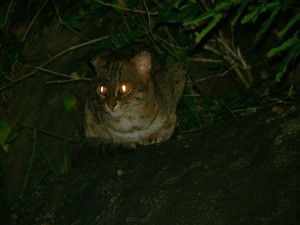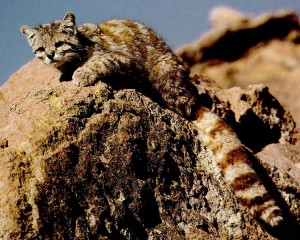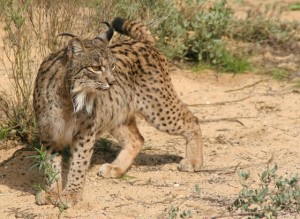Seven Threatened Cats You May Not Know
/https://tf-cmsv2-smithsonianmag-media.s3.amazonaws.com/filer/20110520102247blackfootedcat-orig-300x199.jpg)
The big cats get all the attention, it seems. Lions, tigers and cheetahs are all threatened, but they are not the only cat species whose populations are in danger. Here are seven small cat species under threat:
Black-footed cat (Felis nigripes)
Lives in: the steppes and savannas of southern Africa
Eats: mostly rodents, shrews and birds, but also large insects, spiders, small snakes and geckos
Spends its days: in burrows or in hollowed out termite mounds
Superlative: the smallest of the African cats
Named for: the black bottoms of its feet
Threatened by: habitat degradation from grazing and agriculture, resulting in declines of the cat's prey
Oncilla (Leopardus tigrinus)
AKA: Little Spotted Cat, Tigrillo, Cunaguaro, Tiger Cat
Lives in: montane cloud forests and rainforests in Costa Rica and the Amazon Basin
Eats: small primates, reptiles, birds, rodents and insects
Likes to: climb trees
Threatened by: hunting (for pets and pelts), habitat loss and fragmentation, roads
Rusty-spotted cat (Prionailurus rubiginosus)
Lives in: tropical dry forests and grasslands in southern India and rainforests of Sri Lanka
Named for: small, rust-colored spots on its back
In the wild: sleeps in trees and hollowed out logs during the day
At home: can be very affectionate with an owner (but we need them in the wild, not at home)
Threatened by: habitat loss and spread of agriculture
Andean cat (Oreailurus jacobita)
Lives in: the high regions of the Andes of Argentina, Bolivia, Chile and Peru
Known as: "the sacred cat of the Andes"
Known for: its long, stripey tail
Used to eat: mountain chinchillas (now extinct in many places)
Threatened by: hunting for use in local festivals, loss of their mountain chinchilla prey, habitat destruction due to mining, oil extraction and cattle grazing
Borneo Bay cat (Pardofelis badia)
AKA: Bay Cat, Bornean Cat, Bornean Red Cat or Bornean Marbled Cat
Why we don't have a photo: they are that rare
Lives in: the forests of Borneo
Eats: ? The cat's diet has never been studied.
Color: red or gray
Threatened by: habitat loss due to commercial logging and oil palm plantations
Fishing cat (Prionailurus viverrinus)
Lives: near marshes, mangroves, rivers and streams in India and Southeast Asia
Where you can find one in D.C.: At Smithsonian's National Zoo
Eats: birds, small mammals, snakes, snails and fish
Catches fish: with webbed paws
Uses its tail: as a rudder when swimming
Threatened by: wetland destruction due to human settlement, agriculture and pollution
Iberian lynx (Lynx pardinus)
Lives in: open grassland and dense shrubland in Andalusia, Spain
Used to also live in: Portugal, but hasn't been seen there in years
Eats: the European rabbit, hares, rodents, the occasional young deer
Total population: 84-143 adults, according to the IUCN
Superlatives: the most endangered cat species in the world, and one of the world's most endangered mammals
Threatened by: loss of its main food source, the European rabbit, due to habitat changes, diseases (myxomatosis and Rabbit Haemorrhagic Disease) and hunting
/https://tf-cmsv2-smithsonianmag-media.s3.amazonaws.com/accounts/headshot/Sarah-Zielinski-240.jpg)






/https://tf-cmsv2-smithsonianmag-media.s3.amazonaws.com/accounts/headshot/Sarah-Zielinski-240.jpg)